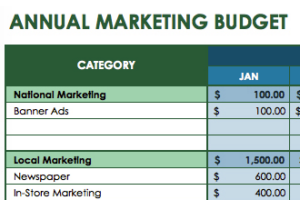
One of the biggest advantages of Internet marketing is its incredible versatility. Internet marketing has the potential to reach millions of potential customers and bring them to your site to increase your revenue and grow your company. And you can do it all from the comfort of your office.






Still, you need a strategy before you start to get the best results.
A strategic Internet marketing plan helps you get a broad view of what you want to accomplish, when you’ll do it, and how you’ll do it. Even if your initial strategy changes over time, a plan will keep you focused on what you want to achieve over the long term. Without it, you don’t have a clear path to success.
Before you begin your next Internet marketing campaign, develop a strategy using these tips.
Call 888-601-5359 to speak with a strategist about digital marketing plans from WebFX, or keep reading to learn how you can start creating a results-driven marketing strategy.
What do you want to accomplish with your Internet marketing plan? Do you want to penetrate a new niche? Reinforce your brand? Increase revenue and customer loyalty? A well-executed marketing plan has to start with a solid set of goals.
Depending on the scope of your plan, this could be one single goal or a complete set of goals with several smaller objectives. For example, if your goal is to raise brand awareness, you need to set smaller goals like increasing social media followers or generating press mentions to achieve your overall goal. With those simple steps, you can realistically achieve your goals.
Some companies gear campaigns towards their current target markets, either to increase market share or overtake a competitor as the market leader. Others try to get into a whole new market.
You may have one or both goals in mind, as long as you have a clear understanding of the people or businesses you want to attract.
The best ways to evaluate new markets is with demographic or firmographic information. Demographics refers to consumer ages, genders, locations, and other information. Firmographics relate to companies, their employees, their products, and more.
If you sell consumer-based products, you want to use demographics to research current and new markets. If you run a B2B company, you want to use firmographics.
And once you find your new markets, you can move to the next step.
If you want to overtake your current market or jump into a new one, you need to check out the competition appropriately. No matter which option you choose, it’s important to identify the brands in each market, their strengths, and their weaknesses.
When you find something your competition does well, you can take that idea, reframe it in a different context, and publish it yourself. And if you find areas where your competition lapses, you can capitalize on their weakness by using it yourself.

It takes time and money to reach your goal. Regardless of how much you have, you need to decide how you’ll spend it on each stage of your overall marketing strategy.
However, when you’re budgeting, keep in mind that you can’t plan for everything. Things come up, and they may require you to spend more or less, depending on how your strategy works. Either way, it’s important to give yourself some wiggle room and overestimate, if you can.
There are lots of online marketing channels at your disposal: social media, email, content, your website, and more.
To find the best one for you, you have to know your audience. Where do your customers go online? What do they do when they’re there? Find out what your customers do online, and you’ll find your most effective channels.
This list can be as long or as short as your budget allows. For the best results, focus most of your resources on a handful of channels to make sure they’re effective, and test out other channels to see if they’re worth your time in the future.
How will the strategy be implemented, and who will implement it? Whether you have a team of five or 50, you have to assign personal responsibility for each marketing channel.
Members of a small team may work on one or more tasks if you need — they just need to share responsibility for your success.
Regardless of your choice, it’s critical that you know the names of the people who are responsible for accomplishing every part of your overall marketing goal.
A goal can take a long time to reach, but there are a lot of smaller benchmarks you need to hit along the way.
If you don’t know how your strategy is performing over a month, a week, or whatever, you’ll have no indication if you’re getting you close to your goal. When mapping out your strategy, you should also have a way to track or monitor it. Google Analytics is a great way to do that, so you have the data you need to alter your strategy to get the best results.